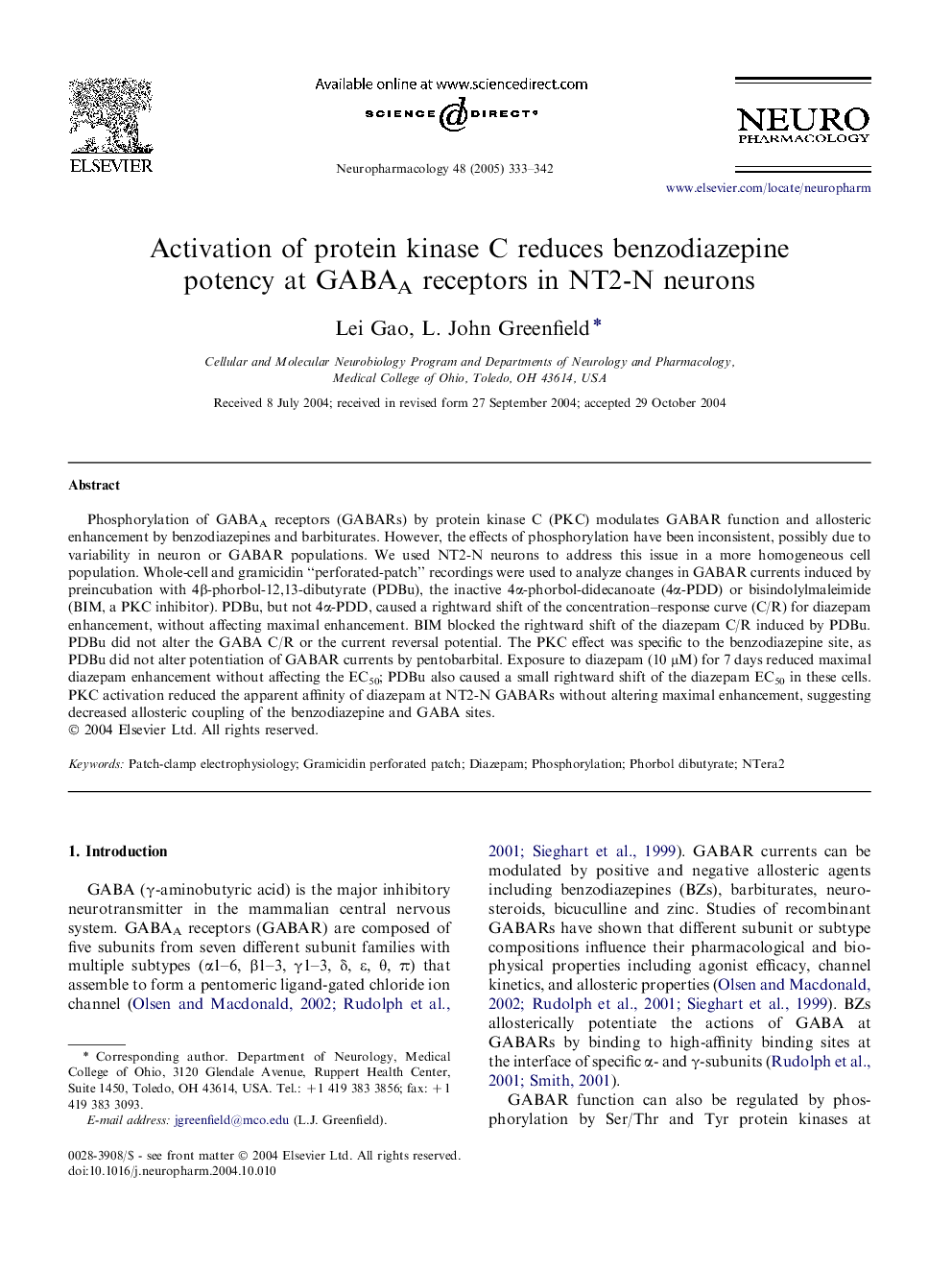| Article ID | Journal | Published Year | Pages | File Type |
|---|---|---|---|---|
| 8998241 | Neuropharmacology | 2005 | 10 Pages |
Abstract
Phosphorylation of GABAA receptors (GABARs) by protein kinase C (PKC) modulates GABAR function and allosteric enhancement by benzodiazepines and barbiturates. However, the effects of phosphorylation have been inconsistent, possibly due to variability in neuron or GABAR populations. We used NT2-N neurons to address this issue in a more homogeneous cell population. Whole-cell and gramicidin “perforated-patch” recordings were used to analyze changes in GABAR currents induced by preincubation with 4β-phorbol-12,13-dibutyrate (PDBu), the inactive 4α-phorbol-didecanoate (4α-PDD) or bisindolylmaleimide (BIM, a PKC inhibitor). PDBu, but not 4α-PDD, caused a rightward shift of the concentration-response curve (C/R) for diazepam enhancement, without affecting maximal enhancement. BIM blocked the rightward shift of the diazepam C/R induced by PDBu. PDBu did not alter the GABA C/R or the current reversal potential. The PKC effect was specific to the benzodiazepine site, as PDBu did not alter potentiation of GABAR currents by pentobarbital. Exposure to diazepam (10 μM) for 7 days reduced maximal diazepam enhancement without affecting the EC50; PDBu also caused a small rightward shift of the diazepam EC50 in these cells. PKC activation reduced the apparent affinity of diazepam at NT2-N GABARs without altering maximal enhancement, suggesting decreased allosteric coupling of the benzodiazepine and GABA sites.
Related Topics
Life Sciences
Neuroscience
Behavioral Neuroscience
Authors
Lei Gao, L. John Greenfield,
